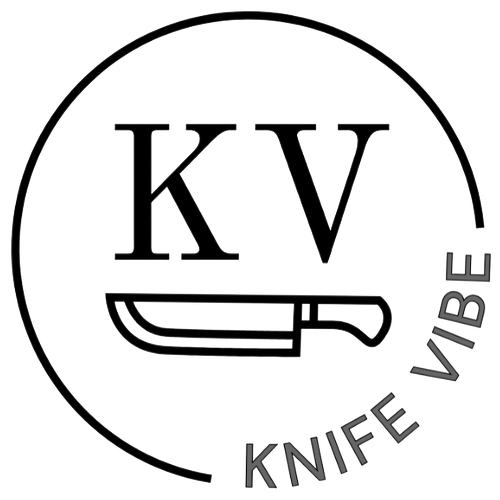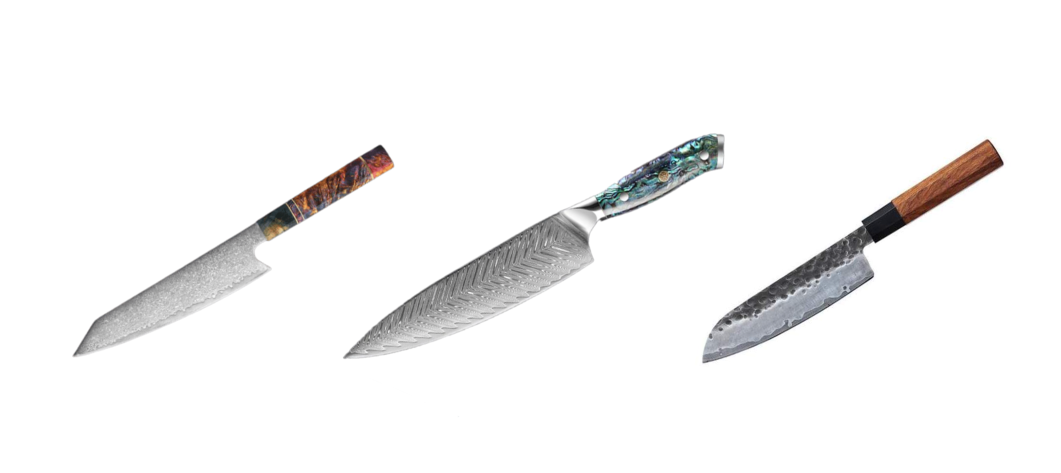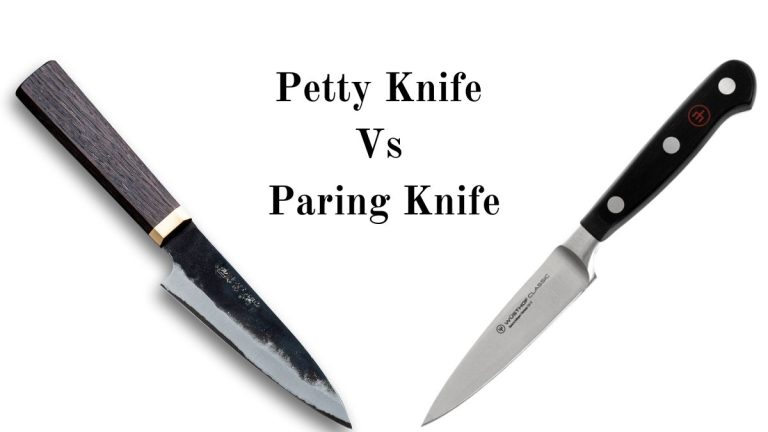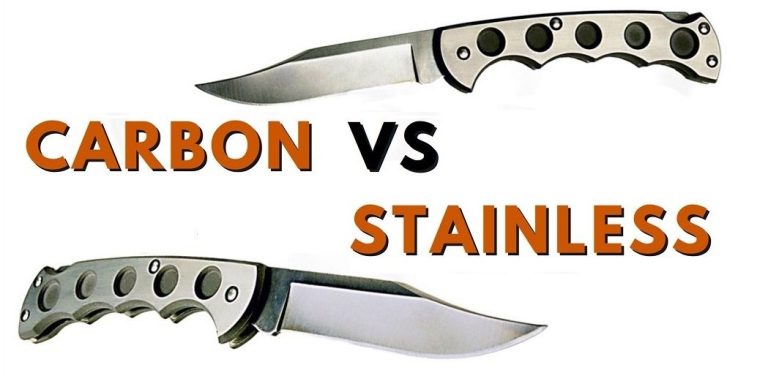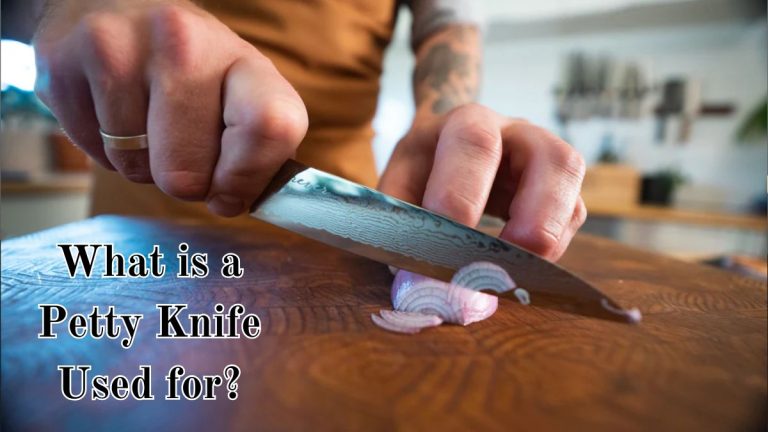Kiritsuke Vs Santoku: Which Japanese Knife Reigns Supreme?
Kiritsuke and Santoku are two popular Japanese knives. Each has unique features and uses.
Choosing the right kitchen knife can make cooking easier and more enjoyable. Kiritsuke and Santoku knives are both excellent choices, but they serve different purposes. Kiritsuke knives are known for their versatility and are often used by skilled chefs. Santoku knives, on the other hand, are more user-friendly and ideal for everyday tasks.
Understanding the differences between these two knives can help you pick the best one for your needs. We will explore the unique characteristics of Kiritsuke and Santoku knives, helping you make an informed decision. Dive into the details and discover which knife suits your culinary style.

Credit: yakushiknives.com
Introduction To Japanese Knives
Japanese knives are renowned for their precision and beauty. They are essential in every kitchen and are cherished by chefs globally. Among the many types, the Kiritsuke and Santoku knives stand out. Let’s explore their historical background and cultural significance.
Historical Background
Japanese knives have a long history. They date back to the samurai era. Craftsmen who made swords for warriors began making kitchen knives. This transition happened in the Edo period.
These knives were influenced by traditional sword-making techniques. They emphasized sharpness and durability. Over time, different knife styles emerged. Each style served a specific purpose in the kitchen. The Kiritsuke and Santoku are two such styles.
Cultural Significance
In Japan, cooking is an art form. Japanese knives play a crucial role in this art. They symbolize precision and dedication. Chefs treat their knives with great respect. A well-maintained knife reflects the chef’s skill and commitment.
The Kiritsuke knife is often seen as a status symbol. It is traditionally used by the executive chef. The Santoku, on the other hand, is a versatile tool. It means “three virtues” – slicing, dicing, and mincing. This knife is found in many households and restaurants.
Both knives have a special place in Japanese culture. They are more than just tools. They are a connection to tradition and craftsmanship.
Kiritsuke Knife Features
The Kiritsuke knife is a versatile tool in the kitchen. Known for its unique design and multifunctional use, this knife stands out among others. Let’s dive into its key features.
Blade Design
The blade design of a Kiritsuke knife is quite distinctive. It features a long, straight edge with a slight curve at the tip. This design allows for precise cuts and versatility.
The blade is typically made from high-carbon stainless steel. This material ensures durability and sharpness. The knife often has a single bevel edge. This means it is sharpened on one side only, making it ideal for fine slicing and dicing.
Here is a table showcasing the blade features:
| Feature | Description |
|---|---|
| Blade Length | 8-10 inches |
| Material | High-carbon stainless steel |
| Edge Type | Single bevel |
| Shape | Straight edge with curved tip |
Common Uses
The Kiritsuke knife serves many purposes in the kitchen. It is often used for slicing fish and vegetables. Its sharp edge allows for clean, precise cuts.
Chefs also use it to cut meat. The long blade makes it easy to slice through large pieces. The knife can also be used for mincing herbs and garlic. Its design ensures efficient chopping without crushing the ingredients.
In summary, the Kiritsuke knife is a valuable addition to any kitchen. Its design and functionality make it a favorite among chefs.
Santoku Knife Features
The Santoku knife is a versatile tool in the kitchen. Its design suits multiple cooking tasks. Let’s explore its features in detail.
Blade Design
The Santoku knife has a wide and flat blade. The blade typically measures 5 to 7 inches. Its tip is slightly rounded, not sharp. The blade’s edge is straight, which makes it great for chopping. Some Santoku knives have a granton edge. This edge has small indentations, reducing food sticking.
Common Uses
Chefs use the Santoku knife for many tasks. It excels at chopping vegetables. Its wide blade makes scooping food easy. Slicing meat is another common use. The flat edge helps in fine slicing. The knife is also good for mincing herbs. Its balance and weight make it comfortable to use.
Material And Craftsmanship
When choosing between a Kiritsuke and a Santoku knife, understanding their material and craftsmanship is crucial. The quality of the steel and handle materials directly affects performance. Let’s explore these aspects.
Steel Types
The type of steel used in a knife determines its durability and sharpness. Both Kiritsuke and Santoku knives are crafted from various types of steel:
| Steel Type | Characteristics |
|---|---|
| High Carbon Steel | Extremely sharp, retains edge longer, prone to rust |
| Stainless Steel | Resistant to rust, less sharp, easy to maintain |
| Damascus Steel | Beautiful patterns, excellent edge retention, expensive |
Kiritsuke knives often use high carbon steel for a sharper edge. Santoku knives are typically made from stainless steel for ease of maintenance. Damascus steel is an option for both, offering a blend of beauty and performance.
Handle Materials
The handle material affects grip and comfort. Both Kiritsuke and Santoku knives come with different handle options:
- Wood: Traditional, comfortable, requires maintenance
- Plastic: Durable, less prone to damage, lighter
- Composite: Blend of materials, offers balance and durability
Wood handles provide a classic and comfortable grip but need regular care. Plastic handles are durable and lightweight, ideal for frequent use. Composite handles strike a balance, offering both comfort and strength.
Choosing the right handle and steel type depends on your needs. High carbon steel for sharper edges, stainless steel for easy care. Wood for comfort, plastic for durability. Understanding these materials ensures a better kitchen experience.
Performance In The Kitchen
Choosing the right knife can make a big difference in your kitchen. Both the Kiritsuke and the Santoku are popular choices. They are known for their performance and versatility. Let’s dive into how they perform in various kitchen tasks.
Cutting Techniques
The Kiritsuke is a hybrid knife. It combines features of the usuba and yanagiba. This makes it ideal for precise slicing and dicing. Its long, straight edge is perfect for push-cutting and draw-cutting.
The Santoku, on the other hand, is known for its sheer versatility. It excels at rock chopping due to its curved edge. The Santoku is great for mincing, dicing, and slicing. Its wider blade makes it easier to scoop food off the cutting board.
Versatility
Both knives are versatile, but they shine in different areas.
- Kiritsuke: Ideal for slicing fish and vegetables. It is a favorite in Japanese cuisine.
- Santoku: More of an all-purpose knife. It handles meat, fish, and vegetables with ease.
Here’s a quick comparison table:
| Feature | Kiritsuke | Santoku |
|---|---|---|
| Blade Shape | Long and straight | Curved |
| Best For | Slicing and dicing | Mincing, dicing, slicing |
| Versatility | Specialized | All-purpose |
Both the Kiritsuke and Santoku offer unique benefits. Your choice depends on your specific needs in the kitchen.
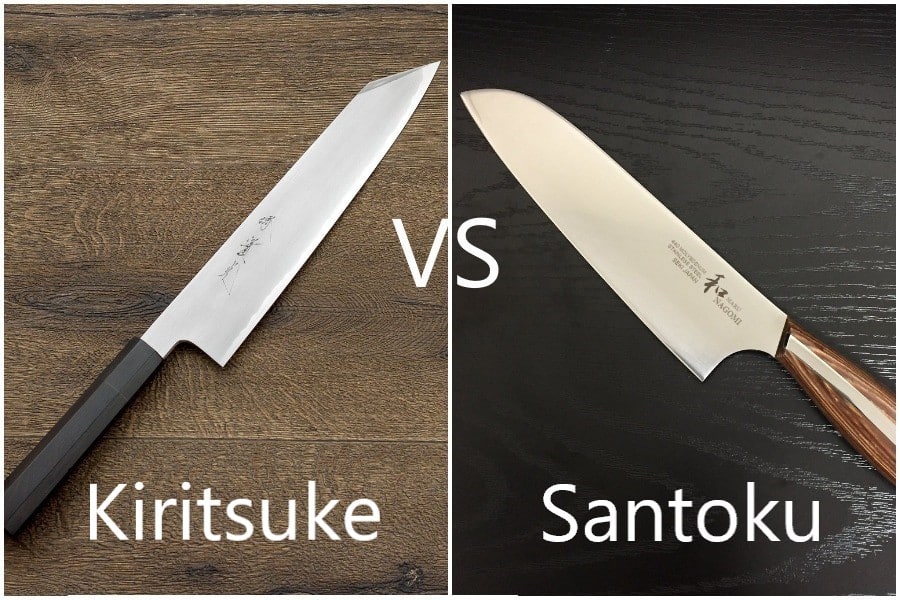
Credit: www.travelsintranslation.com
Maintenance And Care
Maintaining and caring for your Kiritsuke and Santoku knives is essential. Proper maintenance ensures longevity and optimal performance. This section covers the key aspects of keeping your knives in top shape.
Sharpening Methods
Both Kiritsuke and Santoku knives require regular sharpening. Use a whetstone for precise sharpening. Begin with a coarse grit to remove dullness. Follow with a fine grit to polish the edge. Maintain a consistent angle during sharpening. For Kiritsuke, a 15-degree angle works well. Santoku knives often benefit from a 20-degree angle.
A honing rod can also help maintain edge alignment. Use it before each use. This prevents major sharpening sessions. If unsure, professional sharpening services are available. They ensure accuracy and prevent damage.
Storage Tips
Proper storage protects your knives from damage. Avoid keeping them loose in drawers. Use a knife block or magnetic strip. These options keep the blades secure and accessible.
For added protection, consider blade guards. They prevent accidental nicks and cuts. Ensure your storage area is dry. Moisture can cause rust and corrosion. Cleaning and drying knives before storage is crucial. This maintains their quality and performance.
Professional Chef Opinions
Professional chefs often have strong opinions on their tools. The Kiritsuke and Santoku knives are no exception. Each knife has its unique features. These opinions help us understand the pros and cons of each knife in a professional kitchen setting.
Chef Preferences
Chefs have their preferences based on their cooking style. Some prefer the Kiritsuke for its versatility. Others favor the Santoku for its ease of use.
The Kiritsuke knife, with its long, flat blade, is ideal for slicing and dicing. Many sushi chefs prefer it for its precision. On the other hand, the Santoku knife, with its shorter, wider blade, is perfect for chopping and mincing. Many home cooks and chefs who focus on Western cuisine favor it.
Usage Scenarios
In different scenarios, chefs may choose one knife over the other. The Kiritsuke excels in tasks that need precision. For example, slicing fish or vegetables thinly.
The Santoku is excellent for general use. It handles a variety of tasks well. Chopping herbs, slicing meats, and dicing vegetables are easy with a Santoku knife.
Below is a comparison table of common tasks and the preferred knife:
| Task | Preferred Knife |
|---|---|
| Slicing Fish | Kiritsuke |
| Chopping Herbs | Santoku |
| Dicing Vegetables | Santoku |
| Slicing Thin Vegetables | Kiritsuke |

Credit: kyokuknives.com
Choosing The Right Knife
Choosing between a Kiritsuke and a Santoku knife can be challenging. Both knives are versatile and have unique strengths. To make the right choice, consider your cooking style and budget. Here’s a detailed guide to help you decide.
Personal Cooking Style
Understanding your cooking style is crucial. If you enjoy creating intricate dishes, the Kiritsuke is your go-to. It excels in slicing fish and delicate vegetables. This knife is for precision tasks.
On the other hand, if you prefer a general-purpose knife, the Santoku is perfect. It handles a wide range of tasks well. Chopping, dicing, and mincing are its strengths. It is ideal for everyday cooking.
| Feature | Kiritsuke | Santoku |
|---|---|---|
| Best Use | Delicate slicing | General-purpose |
| Precision | High | Moderate |
| Versatility | Moderate | High |
Budget Considerations
Budget is another important factor. The Kiritsuke is often more expensive. This is due to its specialized design and craftsmanship. If you have a higher budget, it’s a worthy investment.
The Santoku is usually more affordable. It offers great value for its price. It’s an excellent choice for home cooks on a budget. It provides versatility without breaking the bank.
Here’s a quick comparison:
- Kiritsuke: Higher cost, specialized use.
- Santoku: Lower cost, versatile use.
To choose the right knife, balance your needs with your budget. Both knives have their own merits. Your choice depends on what you value more in your kitchen.
Frequently Asked Questions
What Is A Kiritsuke Knife?
A Kiritsuke knife is a versatile Japanese chef’s knife. It combines the features of a Yanagiba and Usuba. It’s used for slicing fish and vegetables.
What Is A Santoku Knife Used For?
A Santoku knife is a multipurpose Japanese knife. It’s perfect for slicing, dicing, and chopping. Ideal for vegetables, fish, and meat.
How Do Kiritsuke And Santoku Differ?
Kiritsuke has a longer blade and a pointed tip. Santoku features a shorter blade with a rounded tip. Each serves different purposes.
Which Knife Is Better For Vegetables?
Santoku is generally better for vegetables. Its shorter blade and rounded tip make precise cuts easier. It’s great for everyday use.
Conclusion
Choosing between a Kiritsuke and a Santoku depends on your needs. Both knives offer unique benefits. Kiritsuke excels in versatility and precision. Santoku shines in chopping and slicing tasks. Your cooking style and preferences will guide your choice. Either way, both are excellent additions to your kitchen.
Quality knives make cooking enjoyable and efficient. So, explore both options and decide which fits you best. Happy cooking!
